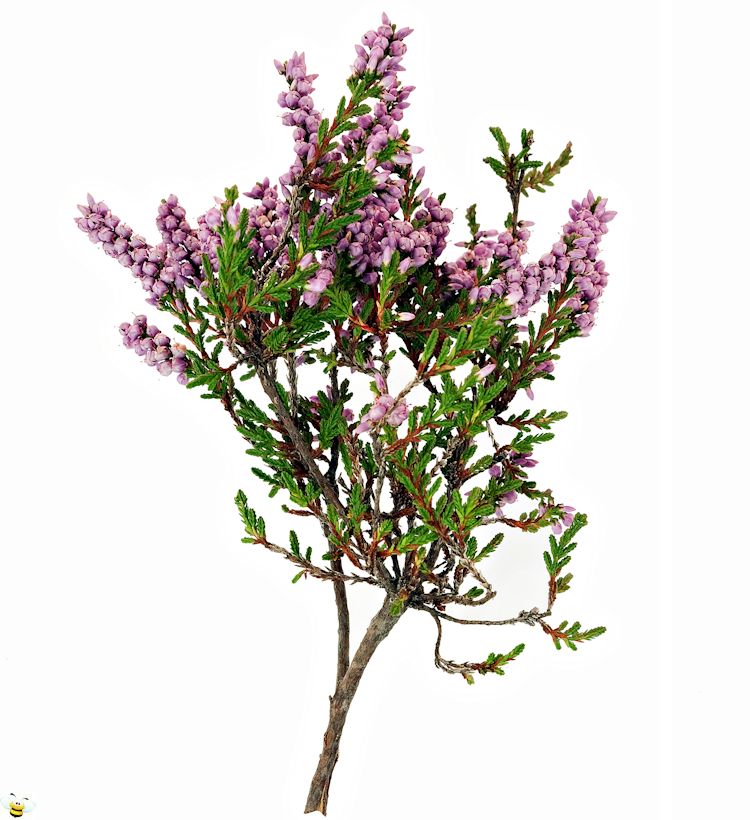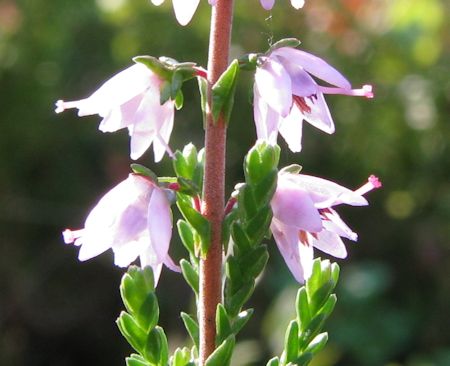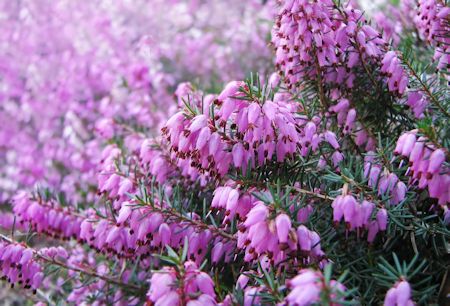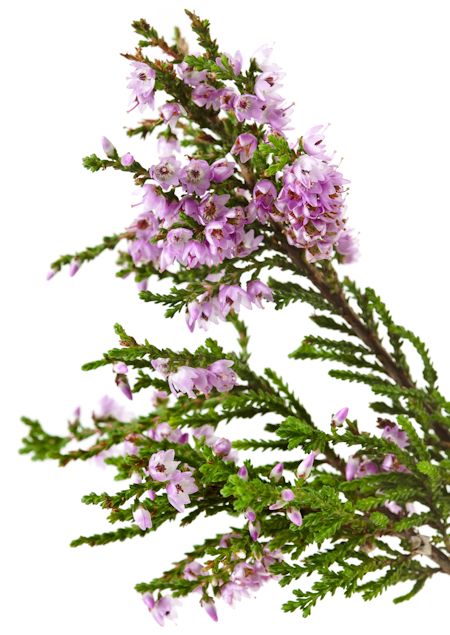The Fascinating Heather Honey
Texture Quality...
Have you ever heard of thixotropic? Heather honey is thixotropic...
...meaning that this honey will become very viscous or gel like thick when it is left at rest for a period of time. However when it is shaken, stirred, or otherwise disturbed it will become liquid! When allowed to rest it will once again return to a jelly like consistency.
While this unique texture quality is a distinguishing and many times a favorable quality for the honey consumer it poses a special challenge for the beekeeper. In the comb this honey is essentially at rest and has become thick and gel like in nature making it nearly impossible to extract the honey using normal spin methods.
Two common solutions are...
- just harvest comb honey and don’t worry about extracting or
- press the honey out of the comb by smashing everything… unfortunately destroying the comb.
Moisture content is unique as well... this honey will typically retain more moisture than normally expected in honey and maintain levels at about 25%. A beekeepers target for honey moisture content is 18%. Moisture content above 18% usually indicates the honey was not completely cured before harvest and there is a risk of spoil by fermentation. The thixotropic nature of heather honey allows it to retain more moisture without the risk of spoil.

WHIZZ NOTE: This sweet treat comes from heather flowers canvasing moorland meadows and sometimes not so gently blowing in the cool crisp breeze...
...providing a honey source so unique no other honey can compare!
A jelly-like texture that turns into liquid when stirred... who would have ever guessed?
Flavor... is lightly sweet and smoky strong, the long-lasting, almost bitter aftertaste carries hints of toffee... becoming stronger with age.
Color... is bright and translucent with shades of reddish orange to dark amber.
Storage... is exceptional and it will crystallize at a very slow rate and may not harden at all.

Plant:
Heather is a small low growing perennial shrub abundant in the moorlands of Europe. This branching shrub with small scale like leaf structures that remind me of an evergreen bush. If this plant is allowed to mature it will grow to about thirty-nine inches tall and branches will become tough and woody.
Many moorland areas are managed specifically so the heather does not mature, maximizing grazing potential. If grazing does not keep the plants young and fresh then light, controlled burning will be used to remove older heather plant matter allowing tender new plants to regenerate.
Bloom:
Ling heather blooms from July to September depending on exact location or elevation and will continue to bloom for about three weeks. Small purple bell shaped flowers emerge along branches of new growth.
Location:
The heather plant is native to Europe and Africa but has also been imported into other locations in North America and Australia. Most heather honey is produced in the moorland areas of the United Kingdom, Scotland, Wales, and Northern England.
Moorland is typically a wetland with characteristic low growing vegetation, acidic soils, and heavy fog. These areas can be defined as uncultivated hill land up to and including the elevation of a mountain slope between the natural tree line and tundra retreating from summer breezes.
While you may find heather honey produced in other locations around the world... it is from these highland regions of Europe that pure ling heather honey is gathered... the kind that will exhibit thixotropic quality best!
Honey and Pollen Potential:
Honey may be produced using nectar from all heather varieties. However, honey from the common or ling heather is most notable and more prevalent than honey produced from other heather's.
A beekeeper who has managed strong hives well and moved them into good locations for the heather nectar flow can expect to harvest in excess of 100 lbs per hive.
Pure heather honey is collected by the honey bees in highland regions of Northern Europe. Much of the heather will be found at elevations that experience cool temperatures year around and only warming slightly in the summer.
As a result, other sources of nectar are scarce...
- on one hand this allows for better control over producing this monofloral honey.
- on the other hand it also means that these locations will not be good honey bee locations year around and bees will have to be moved in if a beekeeper wishes to take part in the heather honey harvest.
This cold temperature can also case honey bee losses if the fly off and get too cold to return to the hive.
Another beekeeping challenge is that the heather flower emerges late in the summer. Many times the queen honey bee has already slowed down laying eggs for the approaching winter and colony population will be declining.
This is fine if your intent is to allow the bees to collect heather nectar for winter food stores but if you want your bees to collect higher quantities of heather nectar during this three week bloom period you will want a hive with high and increasing populations… not decreasing in population. Prepare you hives by re-queening in July giving them a population boost about the same time heather flowers will be in bloom.
When you are identifying a good location for your bee hives during heather nectar flow keep in mind that many times the areas the honey bee will be foraging could vary dramatically in elevation. Position your hive so the bee can fly empty uphill to the majority of the nectar source and then back downhill full of nectar.
Heather is an excellent pollen producer and will produce pollen that is yellow white to white in color.

Many who try heather honey develop a craving for its unique flavor and texture.
The strong flavor of this honey pairs well with ice cream, yogurts, coffee, and medium to strong cheeses. It is generally too strong for the lighter taste of teas.
Try some heather honey in your next batch of gingerbread! The spicy flavor of this honey enhances the flavor of your favorite gingerbread and may just become a tradition for you.
Honey › Good Honey Plants › Heather Honey






